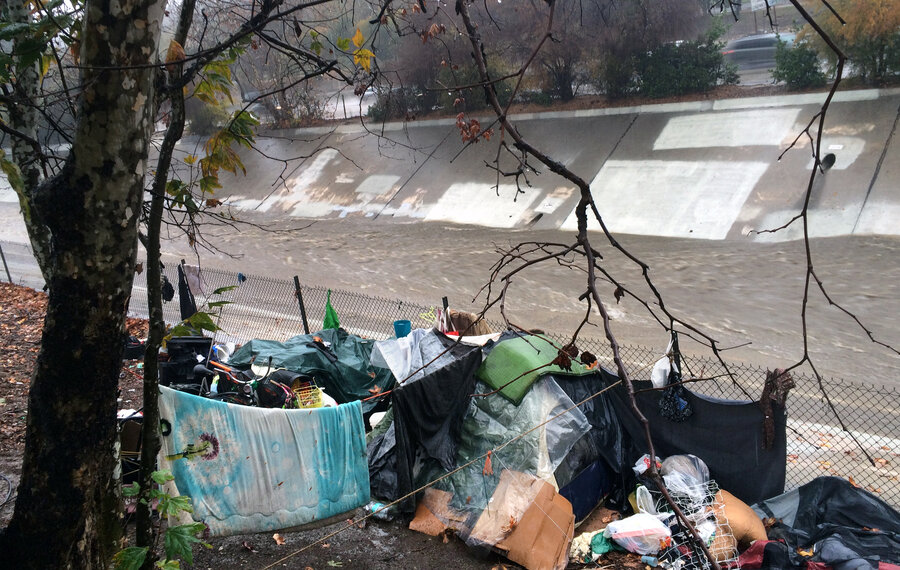Los Angeles scrambles to protect city's homeless from El Niño storms
Loading...
While Los Angeles authorities and legislators continue to tackle a growing homeless population, torrential rainstorms from this year’s El Niño weather patterns add to the struggle.
L.A. Police are patrolling river beds, encouraging homeless people to leave low-lying encampments as El El Niño storms continue to build.
“It is a crisis in L.A., and I don’t think people realize the magnitude of it,” John Kump, an outreach program manager at the charity People Assisting the Homeless (PATH), told Reuters.
Dubbed the homelessness capital of the West Coast, L.A.’s homelessness population is estimated to be 44,000 people. Los Angeles’s homeless population increased 12 percent between 2013 and 2015.
In early December, Los Angeles Mayor Eric Garcetti declared a state of emergency for homelessness in the city. This declaration allocates $12.4 million in emergency homeless relief funding to help keep the city’s vulnerable out of harm.
Among other things, the funds will be used to increase the number of winter shelter beds in L.A. by over 50 percent, bringing the overall total to 1,300 available beds. The goal is to provide these beds to people living in high risk locations such as the Los Angeles riverbed or the Tujunga and Arroyo Seco flood zones, the Mayor said in a press release.
Swift-water rescue teams are ready in case of an emergency, says Fire Chief Ralph Terrazas, but he hopes the city’s preemptive actions will make such rescues unnecessary.
A recent report by the Los Angeles County Civil Grand Jury found that the county is only equipped to shelter 13.2 percent of people currently living on the streets.
“Our county must better address the reality that more than seventy percent of [L.A.’s homeless], about 29,000 people, will be unsheltered during what is expected to be a historic rainy season,” says a recent report by a Los Angeles County Civil Grand Jury. “Not enough is being accomplished to alleviate the suffering that is certain to increase among those who lack reliable shelter as a massive El Niño weather pattern approaches.”
The report's recommendations include calls for additional shelter beds, changes to laws that prevent people from taking shelter in public buildings, and investment in tents, tarps, and ponchos for those who cannot or refuse to be accommodated in shelters.
Beyond steps to address immediate needs presented by El Niño, both the city of L.A. and the state of California have increased efforts to improve availability of longterm housing.
On Monday, California lawmakers introduced a $2 billion plan to find homes for 114,000 homeless residents in the state. Mayor Garcetti allocated an additional $100 million to homeless services in September.
“What’s going on in Los Angeles is really the hub of the best practice work in the country,” Anne Miskey, CEO of the Downtown Women’s Center, the only facility in the area to exclusively serve women, told The Christian Science Monitor’s Gloria Goodale.








